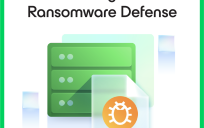In healthcare agencies, it’s critical that data not only be secure but also available in the case of disaster. In the event of a system failure or cybersecurity breach, healthcare organizations must be able to quickly recover secure copies of patient, provider and payer data. Access to this information could literally be a life or death situation.
That’s why healthcare agencies must invest in backup and recovery systems.
Backup and recovery refers to the process of creating and archiving duplicate copies of data, and then making it accessible in case of loss, deletion or corruption. It’s a critical process to ensure that healthcare organizations protect their data in the event of operational failure or more significant disasters.
There are many ways that agencies and institutions can create a backup and recovery environment. For instance, they could use traditional systems like tape-based storage to create copies of data. However, those systems can be costly, complex and difficult to integrate with more current technologies. Not to mention, recovering those copies can be time-consuming.
A more modern and effective alternative to this setup is to protect data in the cloud. Cloud-enabled backup can vastly improve the way hospital IT leaders secure and access their data. It’s easier to integrate with existing data systems, simple to manage the environment and highly secure. Plus recovery times are quicker.
But while cloud-enabled backup seems like an obvious choice when compared to older and outdated setups, many healthcare providers haven’t migrated to this environment yet. Why? It’s not that it isn’t the better solution. It’s a problem of misconceptions – the biggest of which is cost.
This might be surprising if you consider that 42% of surveyed IT executives cited reducing total cost of ownership as their primary business goal for cloud investments. Cloud is known for cutting costs.
However, one of the touted benefits of tape-based backup has always been that it’s inexpensive for storing vast amounts of data. That’s why some health IT leaders might think it’s cheaper to stick with tape.
Actually, that’s only true in a scenario where the amount of data generated and stored is static.
However, in our digital age, data volumes are growing exponentially. Hospitals and health systems that rely on traditional, on-premise backup systems will find they need to continuously invest in new infrastructure to meet their data storage needs.
In contrast, a cloud-integrated backup appliance reduces cost via inline deduplication and compression – minimizing the space needed for your ever-growing data volumes. Network optimization also decreases data volumes transported to the cloud while increasing transfer speed by up to four times.
These efficiencies result in big cost savings – up to hundreds of thousands of dollars for larger health systems.
And savings in cloud aren’t limited to capital costs, either. The reliability of a cloud-integrated solution also beats out traditional backup, allowing IT to reduce the time spent managing backups and troubleshooting hardware issues. One estimate says that an agency can save up to 80 percent of their management costs by switching to cloud backup.
It’s clear that cost isn’t the issue when it comes to moving to cloud-enabled backup and recovery. But unfortunately, that’s not the only misconception that prevents health IT leaders from making the switch. We discuss – and dispel – the other myths related to cloud backups in our recent course, 5 Myths About Cloud Backup for Healthcare. Take the free, 10-minute course by clicking here.






Leave a Reply
You must be logged in to post a comment.